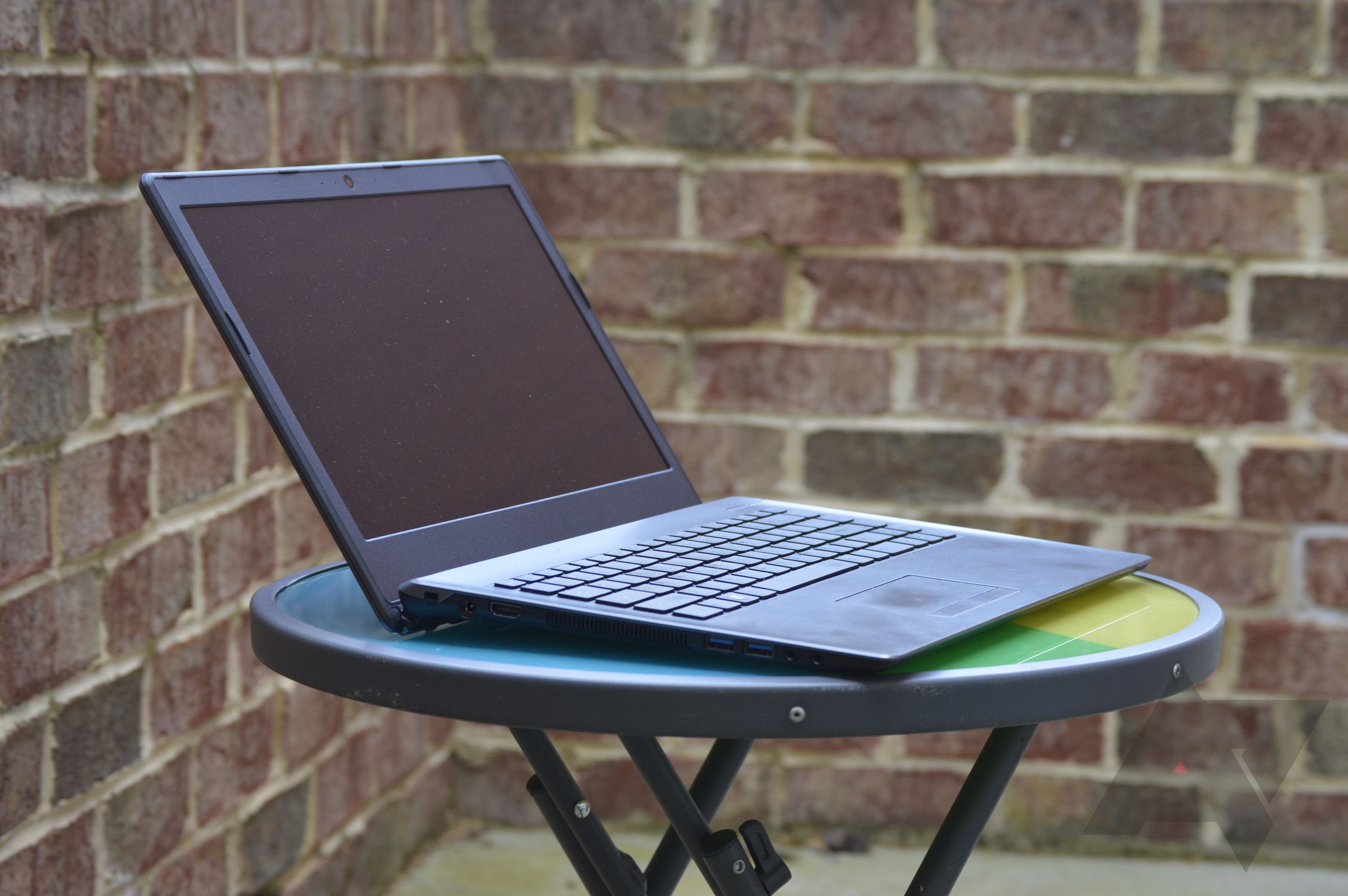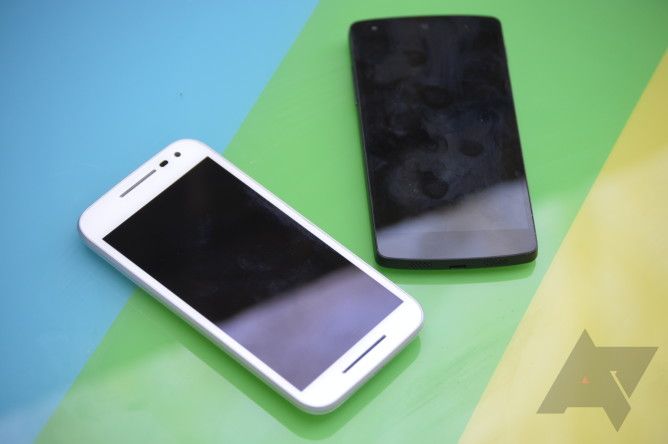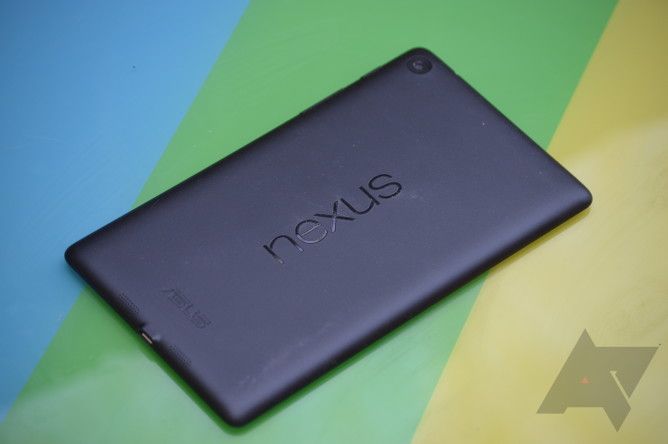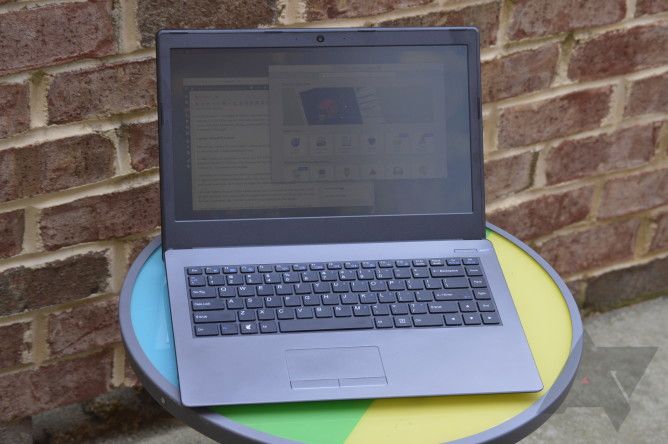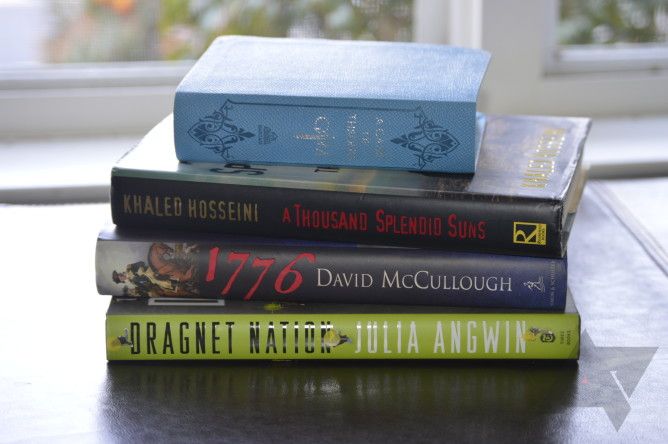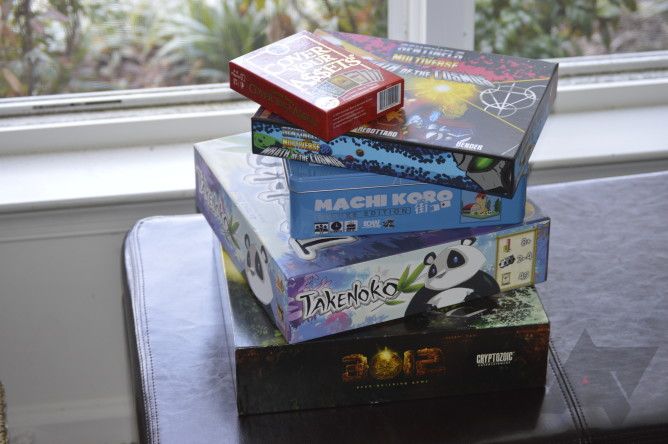My first computer was an old laptop with a dead battery and a dial-up modem. It ran Windows XP, but I didn't have the money to buy expensive software like Microsoft Office or PhotoShop. I discovered OpenOffice.org, AbiWord, and GIMP. I used Firefox, Thunderbird, and Pidgin.Back then free cloud services weren't yet around, and I didn't have a strong enough Internet connection even if they were. Without an understanding of what open source software was, such applications gradually formed the majority of what I used. When I later went to college, I embraced Linux, and my appreciation for open source software grew.The last time I wrote one of these things, I was using a Chromebook Pixel as my primary computer. I considered this an experiment with a commercially viable Linux distribution. It was fun, but I ultimately didn't like some of the changes Google made to the experience in order to push its online services. I knew I was giving up some control just by buying a Chromebook, but these instances made me feel even more powerless over my machine.Android has put me through some of the same emotions. During my time at Android Police, I've watched applications and services come and go, again and again. Some have undergone such drastic changes that they are hardly recognizable. Many solutions have shifted to the cloud, where they're particularly impacted by the need to turn a profit, acquisitions, and corporate decisions. Then there are all the data breaches. And even when things are working as planned, it's all still dependent on having Internet access.Being from rural America, and still having family there, I continue to find myself in a situation where Internet access isn't guaranteed enough for me to trust my computing in the cloud. The connection is great where I live and in the area around me, but I don't have to drive far before I find myself back in the sticks.So, at the beginning of this year, I returned back to my free and open source software-using ways. I've made some changes to my workflow that mark a return to my comfort zone. I am again in a position where I feel empowered, productive, and in control. And frankly, the software I use now reminds me that computing can be fun.With that out of the way, let me show you my stuff.
Hardware
Phone: Moto G 2015 and Nexus 5
The Nexus 5 was a great Android device, but I didn't think it made for a particularly great phone. Mine suffered from this bug where it would stop receiving calls and texts without telling me. When I got a replacement, it did the same thing. Then the battery life stopped making it through a day. I needed a new primary phone, even if I would keep the Nexus 5 around for testing.
I don't enjoy throwing a bunch of money at new phones. Unlike computers, which I can use until they physically fall apart, phones come with an expiration date. If you buy a device as soon as it comes out, you may see around two years of updates. Sometimes you won't even get that much. I want more use out of something I spend $500 on.
Rather than pick up one of the flagships in 2015, I went for the Moto E. I absolutely loved that device. After years of crappy battery life, it was great to use a phone that could go for over two days. The phone rarely slowed down despite its weaker processor, and at a time when smartphone screen sizes continued to compete with e-readers, it was refreshing to hold something that was so one-handable.
Then this happened. Heartbroken, I used that as a chance to give CyanogenMod another go. It was great. Unfortunately my family was having issues with our carrier and had to switch. When we did, I opted for the 3rd gen Moto G instead. It's a larger device, sadly, but the camera is better, and I can still get over two days of battery life. With the way the industry is moving, I'm excited to see how much phone I will be able to get for $200 by the time I'm ready to replace this one.
Tablet: Nexus 7 2013
Yes, this thing is getting a bit long in the tooth by this point, but I don't care. There are precisely zero times throughout the day that I feel the urge to reach for a tablet to use for fun. I keep this tablet around when I need a tablet screenshot and to test out apps that I rather not have gunking up other devices. That's it.
Except, the Nexus 7 isn't getting Android N. That means the time has come to start thinking about replacing it. I wish I didn't have to. This piece of hardware has held up pretty well over the years. If I didn't write about Android for a living, I would probably try to stretch this one out for a little while longer. I still might.
Laptop: System76 Lemur
After running Chrome OS as my primary operating system for nearly three years, I started 2016 off by switching back to traditional desktop Linux.
I installed Fedora, my distribution of choice, on a Dell XPS from 2013 that suffered from a botched upgrade to Windows 10 (I'm not a Windows guy, but my wife needs a copy for work). After using that for a bit, I still wanted a new machine.
I decided to get a laptop that came with Linux pre-installed in order to avoid the headache of trying to replace a newer version of Windows and to show support for companies that contribute to the open source community. So I went to the System76 website and ordered a Lemur.
I hardly maxed out the specs, but with an Intel i3-6100U processor, 8GB of RAM, and an SSD, Linux flies. Oh, and the System76 logo on the back of the laptop comes off (after quite a bit of deliberate scraping on my part). The build quality isn't in the same league as my old Chromebook Pixel, but at least I get to keep the subdued look.
I love this machine. It's good to have a matte display, and it's even better to have one with a 1920 by 1080 resolution. After dealing with the cramped space provided by the Chromebook Pixel and the Asus Chromebook Flip, I feel like a colonist having landed in the New World.
Also, it's nice to have ports again. Ethernet, full-sized HDMI, VGA—I'm surprised this laptop is as slim as it is.
Camera: Nikon D3200
I used this camera for every photo in this post except for this one. Here I used my Moto G.
My wife and I wanted a nice camera for a while, but dropping several hundred bucks on a DSLR felt like a splurge. Being able to use the device for work helped justify the purchase some, but considering the small number of photos I take for Android Police, only some. Fortunately we caught a good deal on one. This is my first time using a camera this big, with lenses you can swap out and stuff, so I don't have a gauge of how the Nikon D3200 compares to similar products.
But I can say that since getting this thing, I haven't taken all that many pictures with my phone. What? Do you seriously take that huge thing with you everywhere? No, I don't, but I'm not much of a spontaneous picture taker. Usually I plan ahead and know when I'm going to want to take a bunch of shots—such as when visiting a new city or going to the park—and make sure I have my camera nearby. In those times that I do forget, I opt not to take a picture rather than end up with an image that would only make me wish I had remembered my DSLR.
This is a very different scenario than Ryan, who finds he doesn't use his DSLR all that much anymore due to how great smartphone cameras have become. Speaking for myself, the phones I've owned haven't taken images anywhere near this nice, and since I pay full price for my devices, the money saved not buying a flagship is enough to catch a DSLR starter set on sale. And this thing will still take great shots two years from now.
Other Stuff
I use the same Bluetooth speaker as before. That Chromecast remains behind my TV. I still work at the same desk. That Bluetooth mouse is tucked away in one of the drawers, since I don't find much need to pull it out anymore.
Some things have changed. I don't have an external monitor anymore. I also let go of the Chromebook Pixel. The HTC One M7 is in my desk, but that's only because I have nothing else to do with it.
For someone who writes about tech for a living, I don't particularly enjoy buying new gadgets. If what I have works, I no longer feel the urge to replace it with something offering a few new features. Despite the name of this post (which is the same for all of our What We Use entries), I could live just fine without a number of the gadgets I'm showing you. There are other things I prefer to spend my money on. We'll get to that in a moment.
Software
Android
As I mentioned earlier, I started using a custom ROM again a few months back. Since I was now playing around with the open source bits of Android, I decided to try out F-Droid. To my surprise, the Android app repository with nothing but FOSS apps had received a material makeover. It had turned into something I didn't mind looking at long enough to use.
As I mentioned in our list of favorite app recommendations for 2015, I was able to find enough options to meet my core needs and decided to do without the Play Store and Google Play Services entirely. I still have them around on my non-primary Android devices to test out apps and such for work, but I find that I manage pretty well in my day-to-day life without the extra weight.
For checking email, listening to music, taking pictures, and browsing through photos, I use the default apps that came with CyanogenMod. These are some of the supplemental apps I've installed from F-Droid.
- AntennaPod: Listening to podcasts is probably the most common thing I do on my phone, second to checking the time despite having a watch on my wrist. AntennaPod lets me manage my feeds and set restrictions not to stream or download over mobile data. I don't care about syncing across devices, so this is all I need.
- DuckDuckGo: I started using DuckDuckGo for web searches in place of Google several months back, and most of the time, the difference hasn't been prominent enough for me to realize I'm using one versus the other. This is not the case with the DuckDuckGo mobile app. I keep a shortcut on my homescreen, bang out search terms, and read the resulting webpages inside the app. Since most of the time I don't need to manage multiple tabs on my phone, this works well for me. The app also doubles as a news reader, but I don't dabble with that part all that much.
- Micopi+: Using Micopi+ means I have an attractive image for each of my phone contacts, and I don't have to hassle them for a photo.
- OpenVPN: OpenVPN drains battery like a mofo, but it connects me to my VPN without much fuss.
- OsmAnd~: I consider a navigation app a must, making this my biggest reservation about giving up Google Play. OsmAnd~ isn't particularly pretty, and it's completely balls at pulling up addresses, but with the right help, the app gets the job done. That I can save as many offline maps as I want for free is also reason to smile.
- QKSMS: I had trouble sending and receiving MMS using CyanogenMod's default texting app. This well-known alternative took care of that problem for me.
- Transistor: I never used TuneIn all that much, but it was nice to stream a few stations every now and then. Transistor lets me play streams embedded within m3u and pls links. That means I can listen to my local public radio station without plugging in earphones to use the FM Radio app, which is enough to keep me happy.
- Wikipedia: Turns out the mobile app is a nice way of looking stuff up on Wikipedia. It also gets me to look at the home page more, which itself is a nice source of eclectic facts and a way to keep up with current events.
Linux
My laptop came with Ubuntu, which I immediately replaced with Fedora. For my desktop environment, I use GNOME.
I must admit, I'm glad I spent the past three years away on Chrome OS. Now I know for sure the cloud is not for me, and I'm returning to traditional Linux with new appreciation for the number of open source apps out there and what I can do with them. Here are some of the tools I use regularly for work.
- Firefox: Chrome and Chromium are available for Linux, but Firefox does a better job of integrating with the GNOME desktop. I have to install a few extensions to make the magic happen, but at least it's possible to make it largely indistinguishable from other GNOME software.
- Gedit: When I'm not writing directly into the browser, I like to use a basic text editor. Gedit can autosave every few minutes, which is typically often enough to preserve what I've written in case something decides to spaz out.
- gThumb: This image viewer makes cropping and resizing images a breeze.
- Shutter: This is great for taking screenshots and editing out sensitive information.
- GIMP: I would say this is my PhotoShop replacement, but I've never used PhotoShop. For me, Adobe products are my GIMP alternative, and I might as well stick with what I know. For this post, I used GIMP to add watermarks to each photo.
- LibreOffice: I use a spreadsheet to keep up with how many articles I've written each month. I used to do this in Google Docs, but these days I rather use something local again.
There are many other applications on my machine that I feel deserve a shoutout. Boxes makes firing up a virtual machine completely painless. Geary is a great email client. Corebird is my preferred way to sign into Twitter, not that I particularly enjoy reading or writing tweets.
Then there's GNOME Software. This package manager wasn't ready yet the last time I installed a Linux distro, but I now find it to be a significantly easier way to discover and install applications than previous options.
GNOME as a whole has fixed many of the issues that lingered around from the GNOME 3.0 transition (something I already preferred over 2.x) and has matured into a simultaneously delightful and productivity-enhancing work environment for my needs.
Leisure
I used to watch TV and play video games during my downtime. Lately, I've largely cut out both. I sold my 3DS, and my Wii U is in a closet somewhere. The one editorial I've written for Android Police thus far was about gaming, but hey, people change. These are the things I'm into now.
Books
For a few years, I fully embraced ebooks. The original Nook Color (which I eventually ran CyanogenMod on) was my first Android device. I later owned a couple Nook Simple Touch e-readers. At some point, I switched from Nook to Google Play.
I eventually grew disappointed with the idea of acquiring a license to read a book, rather than owning a book itself. For a while, I only purchased DRM-free content instead, which limited what I could buy. Then I simply grew tired of reading off a screen after already having to stare at one all day for work.
These days, I prefer to read good old-fashioned physical books. I own them, they're easy to share, and I'll have a library my future kids can enjoy without needing access to my online account (which may or may not still exist in its current form). And my eyes are happy to stare at something else.
Comics
The story here is similar to the one above. I got into comic books on my Nexus 7 after snagging one off Google Play on sale (Saga, pictured above―okay, that's not the original digital copy, but you know what I mean). I began to buy a bunch of issues. Except in this case, depending on the publisher, I could download a DRM-free copy onto my computer to keep indefinitely. This is how Image Comics became my favorite source of comics.
But regardless of having true ownership over most of what I bought, I still grew tired of staring at a screen all day. I started buying the print version of these as well, and I try to pick up new volumes every month or two.
Magazines
I majored in history and government during my years at college, and by the time I finished reading the thousands of pages it took to graduate, I had developed a lasting interest in both subject matters. A large number of the books I buy fall under these categories.
I also turn to magazines. I know, I write for the web. Sites like this one killed off the print industry.
Except, they haven't. Not yet anyway. Walk into a Barnes & Noble and check out the magazine section. The selection remains pretty intense. I have no problem finding subscriptions I'm interested in. Rather, I have a harder time narrowing things down.
I don't read much on my phone anymore. After a day of writing content that gets posted live, I enjoy sitting down and reading the kind of articles and essays that someone spent weeks putting together.
Board Games
These aren't the board games I played as a kid. The stuff game makers cram into boxes now could qualify as video games without the electricity requirement. I've found games that scratch any nerd itch—whether it's taking over the galaxy (Eclipse), settling for a kingdom (Carcasonne), cutting through skeletons (Small World), slapping a cultist (Ascension), shooting mechs (Abaddon), surviving the zombie apocalypse (Dead of Winter), being a boss (Boss Monster), remembering how cute Japanese things are (Takenoko), I mean seriously (Machi Koro), or building a stupidly long train for no reason (Ticket to Ride).
I could go on, but I don't need people judging me for how much money I spend on board games. I will say this — Sentinels of the Multiverse is my favorite, and the final expansion can't get here soon enough.
Gi
Last time around, I mentioned how I practice yoga at home. Since then I've picked up another way to stay active and have started taking martial arts classes a couple times a week.
I grew up as the kind of kid anyone would consider soft. I never got in a fight, nor did I play sports (excluding a year of baseball). In short, I didn't spend much time hitting things. Doing that now, and learning how to defend myself, instills a feeling of confidence that I am grateful for. Plus it's a great way to expend all that energy I don't use mashing on my keyboard.
Conclusion
There you have it. Quite a bit has changed in the past year and a half. I'm not nearly as invested in Google's ecosystem as I once was, but as a massive Linux-based open source project, Android remains my mobile operating system of choice.
I'm clearly not your average computer user, and we probably don't consume as much electricity in my household as you would expect. So if you have questions about anything, feel free to ask away.

